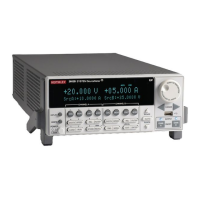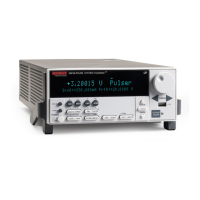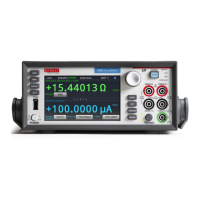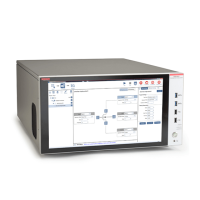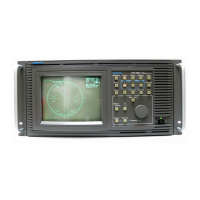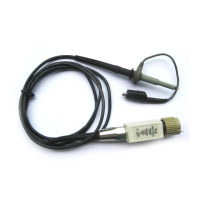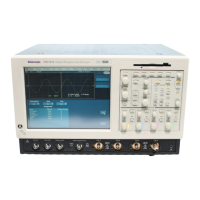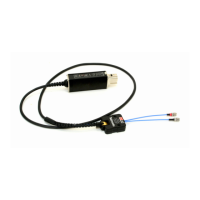The following figure shows what happens if the resistance of the load is increased to 200 Ω. The DUT
load line for 200 Ω intersects the voltage compliance limit line, which places the SMU in voltage
compliance. In compliance, the SMU cannot source the programmed current of 100 mA. For the
200 Ω DUT, the SMU only outputs 50 mA at the 10 V limit.
As resistance increases, the slope of the DUT load line increases. As resistance increases and
approaches infinity (open output), the SMU sources virtually 0 mA at 10 V. Conversely, as resistance
decreases, the slope of the DUT load line decreases. At zero resistance (shorted output), the SMU
sources 100 mA at virtually 0 V.
Figure 77: Current source operation in voltage compliance
The following figure shows what happens if a power limit of 600 mW is applied. As the SMU attempts
to output the programmed source value of 100 mA, the power-limited voltage compliance limit line is
reached, which places the SMU in power compliance. The SMU enforces the power compliance limit
by setting the voltage compliance limit to the new power-limited voltage compliance limit setting,
which in this case is 6 V. In compliance, the SMU cannot source its programmed current of 100 mA.
For the 200 Ω DUT, the SMU only outputs 30 mA at the 6 V limit. In this example, voltage never
exceeds the programmed compliance of 10 V or the programmed power compliance of 600 mW
under any load.
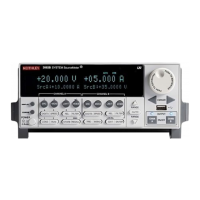
